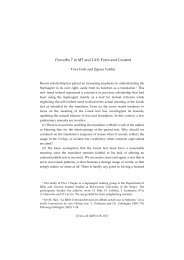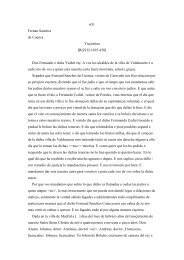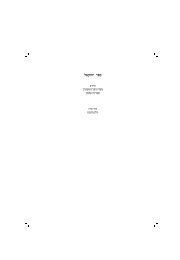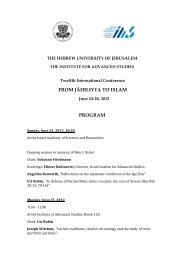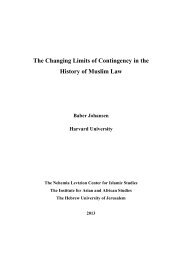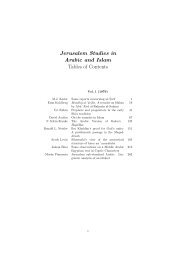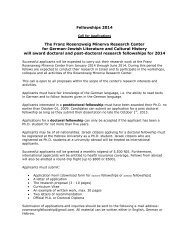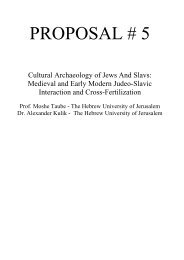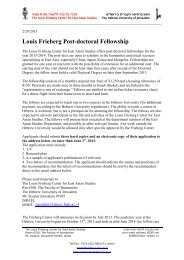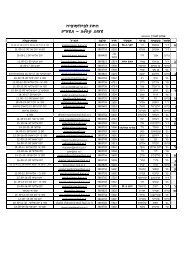THE BOOK OF EZEKIEL Moshe H. Goshen-Gottstein Shemaryahu ...
THE BOOK OF EZEKIEL Moshe H. Goshen-Gottstein Shemaryahu ...
THE BOOK OF EZEKIEL Moshe H. Goshen-Gottstein Shemaryahu ...
You also want an ePaper? Increase the reach of your titles
YUMPU automatically turns print PDFs into web optimized ePapers that Google loves.
III. Apparatus I: The Versions<br />
hapl haplography 70<br />
Hier<br />
readings in Jerome’s commentary<br />
homoio homoioteleuton/homoioarchton or omission caused by a scribal<br />
factor 71<br />
homophony the translator chose the translational equivalent to imitate the sound<br />
of the Hebrew 72<br />
idiom idiomatic usage<br />
init<br />
beginning of verse<br />
inner-]([}) inner-versional corruption/development<br />
k/q<br />
ketib/qere<br />
k/y<br />
ketib/yetir<br />
lexic<br />
problematic lexicographical identification of word in x<br />
ms(s)<br />
(unspecified) manuscript(s)<br />
nom/pron interchange of noun/pronoun<br />
nom/verb interchange of nominal form of lexeme with verbal form<br />
om omission (also >)<br />
p<br />
perhaps<br />
parall<br />
difference deriving from the influence of a syntactic parallel in the<br />
immediate context, at the scribal or translational level<br />
phon<br />
indicates a phonetic problem in x, for example, an interchange of<br />
final m / o, etc.<br />
pict<br />
translation reflecting a different understanding of x, especially in<br />
figurative passages<br />
pr placed before; preceded by 73<br />
prec<br />
compare similar problem in a preceding lemma or same verse<br />
Rabb Heb etymological derivation based on Rabbinic Hebrew<br />
rep<br />
repetition resulting in figura etymologica, etc.<br />
retrov retroverted from a version<br />
seq<br />
refers to similar or pertinent data in the continuation of the verse or<br />
immediate context, a subsequent lemma, or, when specified, apparatus<br />
slot<br />
replacement of ‘redundant’ or difficult word with new content<br />
struct<br />
different understanding of the sentence structure or different division<br />
of words between clauses<br />
70 Cf. ‘ditt’.<br />
71 It is sometimes difficult to determine precisely what text is missing, for example, at 40:8.<br />
72 Cf. E. Tov, “Loan Words, Homophony and Transliterations in the Septuagint,” Biblica 60 (1979)<br />
216–236; cf., for example, 23:42, n. 1; 47:3, n. 4.<br />
73 Sometimes used together with the notation ‘init’; cf. above, §41.<br />
xxvii



